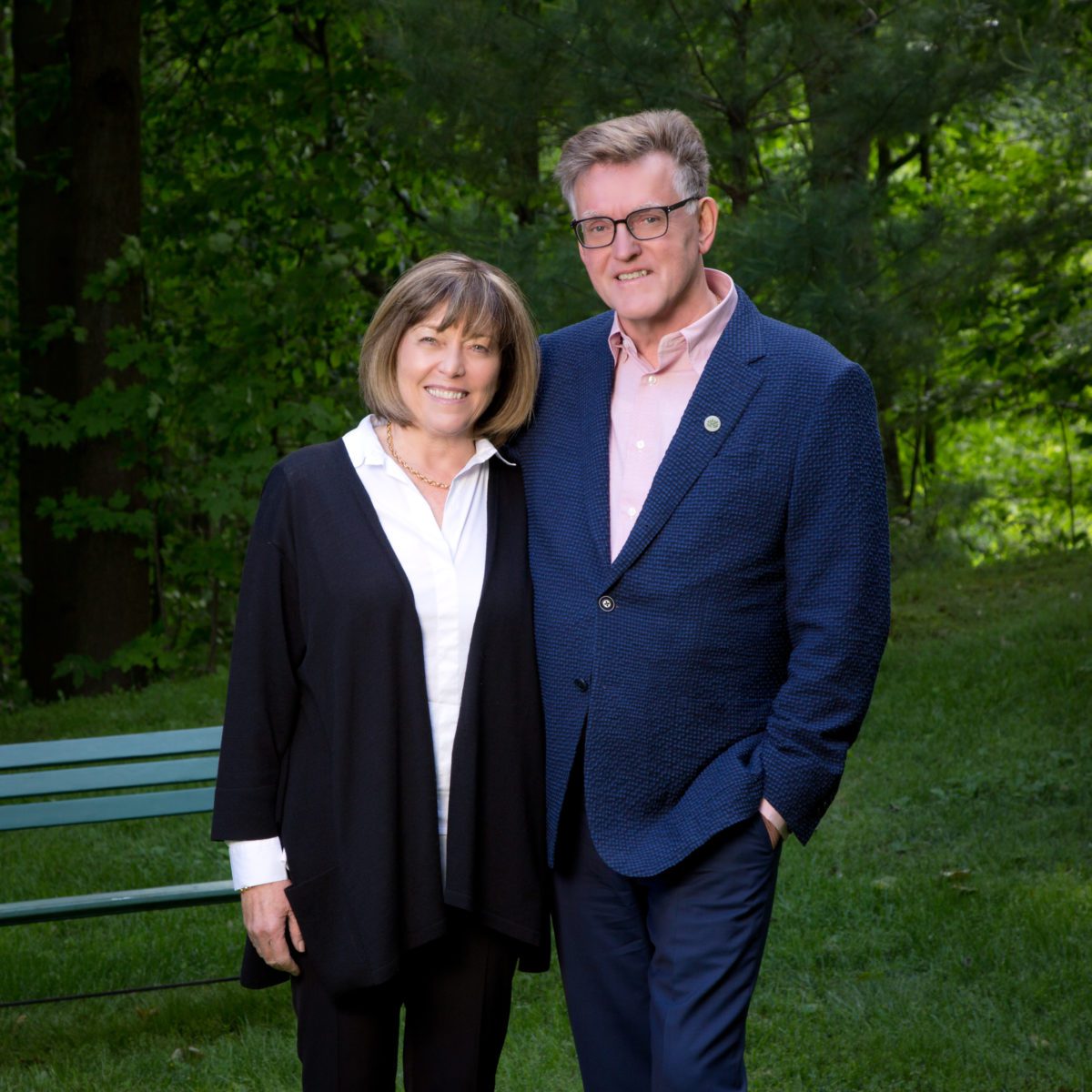
Thousands of acres and more than 20 environmentally sensitive ecosystems in seven provinces have been conserved, restored and maintained thanks to the generosity of Dr. Jan Oudenes and Dr. Isobel Ralston’s MapleCross fund. While they take their commitment to land conservation seriously, our Conversation on Conservation was light-hearted and sparked with laughter.
Jan and Isobel established the MapleCross fund in 2017 after retiring from their science-based business careers. Jan, who was born in the Netherlands, earned his PhD degree in synthetic organic chemistry. He joined Ontario’s Torcan Chemical Ltd. in the early 80s, started Aurora Chemicals Ltd. and created Alphora Research Inc. a pharmaceutical powerhouse that develops new manufacturing technologies for the pharmaceutical and biotechnology companies.
After earning her BSc and PhD degrees in chemistry, Isobel spent two years as a Research Associate at the Universität Zurich. During her thirty years in global drug development she held senior management positions, directed clinical research and regulatory affairs and was a consultant to pharmaceutical and biotech sectors.
Both admit that their land conservancy work takes up a lot of their time in retirement. In pre-COVID times they travelled the world. Now to relax, Jan is learning to play the piano while Isobel paints. Her work, which has been included in several group exhibitions, interprets nature in vibrant colours.
“Investing in Nature. Investing in Canada” is the MapleCross theme. Why have you chosen this focus?
Isobel: We’ve spent most of our life together here in Canada, hiking in the Rockies, enjoying outdoor adventures in the Yukon; canoeing in Ontario and on the South Nahanni River. Nature has always kept us spellbound. We say, “Canada and nature” because they are almost synonymous.
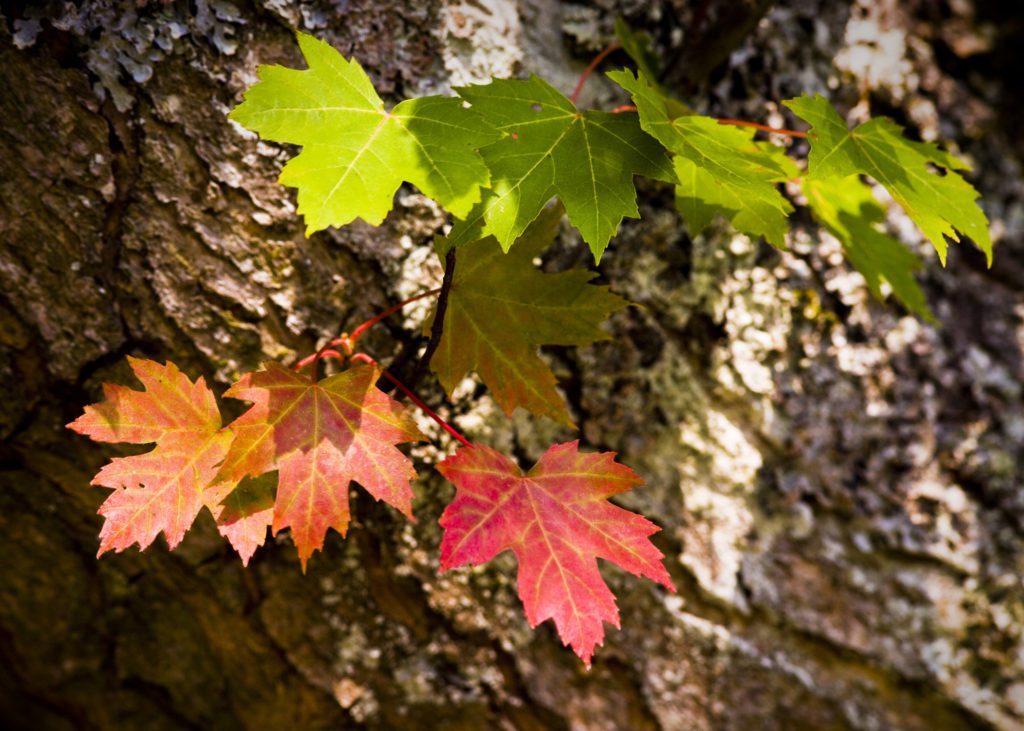
Nature and Canada are almost synonymous
Jan: Investing is an important part of our philosophy. When we invest in land conservancies the dividend will be the well-being and enrichment of species saved and the diversity gained. And it will be in the way we enhance our nature reserves to make it a better world for generations to come.
Canada has always had a bit of mystique for me. I come from a small country where my knowledge of nature was cycling along canals seeing ducks, geese, swans and herons. I originally came to Canada for a year, but I got lost here and never found my way back to where I came from.
How did you choose the name MapleCross?
Jan: We were inspired by a place in Scotland called Applecross. Here we look out at a forest of sugar maples so we came up with the name MapleCross.
How do you make your decisions about investing in nature?
Isobel: We rely on the expertise of the land conservancy staff regarding specific projects. The ecology across Canada is so different, so we ask the nature trusts about their priorities to assess where our investment should go.
We also listen to recommendations regarding which groups to work with. The Nature Trust of British Columbia is a good example. The head of one of our Ontario land trusts recommended that we talk to CEO, Jasper Lament. People in B.C. have also suggested people we should talk to on the East Coast. We really like that culture of cooperation. It’s also a bit of a gut feeling when you meet people and feel their passion.
Do you make your funding decisions together or do you have a team?
Jan: Originally it was just the two of us making decisions but we got into squabbles so we needed a third person to help us out. When the head of forestry for the York Region retired he became part of our team. He gives us input on what properties are ecologically important and he does a lot of the follow up on management reports.
We’ve also chosen a nephew and a niece from each side of our family to be part of our team. They are a generation or more younger and we’re grooming them to know what we want to do, why we think it’s important, and to make sure the story of conservancy gets told for generations to come. Should something happen to us, they can take over and make sure our funds are properly dispersed.
When you started this journey did you envision that you would be instrumental in preserving thousands of acres of environmentally sensitive land in seven provinces?
Isobel: Did we think of that? No. We started out testing the waters to see how this works then learning and moving ahead.
We see Canada as a whole. We live in Ontario but we’ve also lived in Alberta and we’ve spent a lot of time in British Columbia. It became clear to us that we’d look at wherever land needed to be preserved across this wonderful country.
We’ve made an effort to go to as many provinces as possible to see where the need is greatest, recognizing that we’re not just looking at what’s happening in our own backyard. Our neighbourhood is Canada.
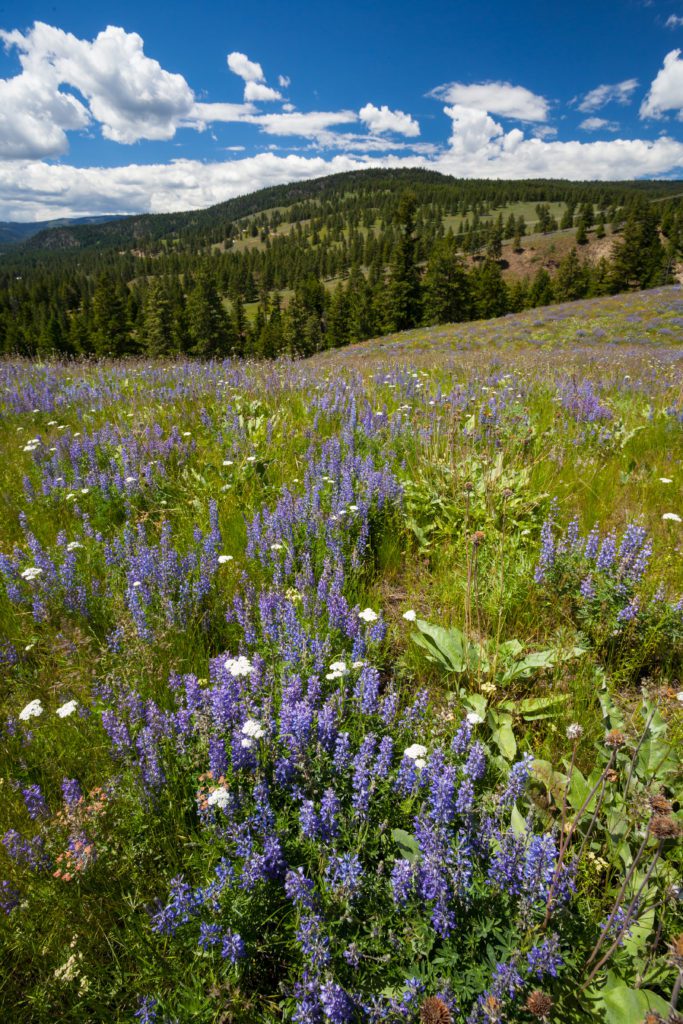
Our neighbourhood is Canada
Do you hope to inspire others to invest in conservancy?
Jan: The movement in land conservancy needs to become bigger; the story needs to be told.
The inspiration extends to the awareness of the need to preserve, conserve and also restore land. But it’s also important for other people to contribute to the movement whether it’s a dollar or hundreds of dollars. Everybody has his or her own ability to contribute and every contribution is important for it creates further awareness.
Isobel: When we’re talking about inspiration I also think about who inspires us – it’s the volunteers, the staff, and the ecologists. So many people across this country are truly dedicated, especially the volunteers who give of their time. It’s very motivating.
How do you encourage others to be as excited and energized about land conservancy as you?
Jan: When I was in business, I never knew where clients would come from. It could be a recommendation, a direct connection or the result of a discussion around a dinner table. I think it came from the volume of stories and I think the volume of stories about land conservation will also make a difference. People have to make their own decisions and come to their own conclusions but we have to keep telling the story.
Isobel: Matching funds is another thing we do to help inspire support for land conservation. It really gets people interested and thinking.
We recognize that the environment is one of the underfunded charitable sectors and we talk to people to help them understand more about it. We encourage them to come to conservancy events and to recognize what can be done at a local level.
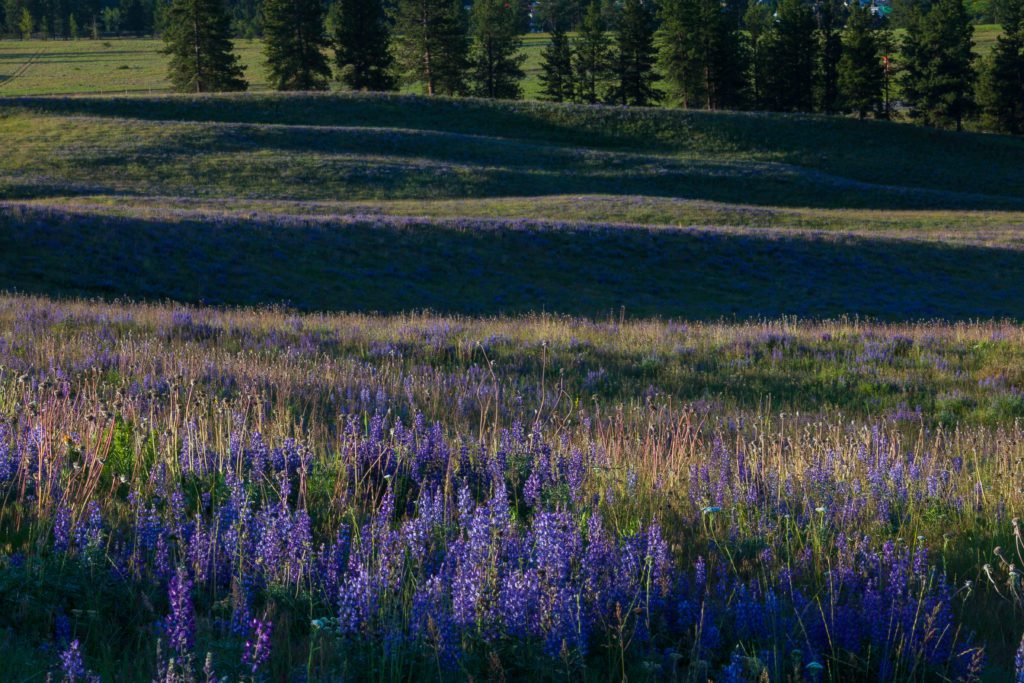
Princeton Grasslands
How did you decide to support The Nature Trust of BC’s Princeton Grasslands property?
Jan: Our consultant in the field always stressed the importance of grasslands as did other nature conservancies. When The Nature Trust proposed the Princeton Grasslands as a high priority project in need of funding, we decided to invest in it.
We really rely on the management of the land conservancies to determine their important projects. We have an interesting view of the whole conservancy movement in Canada. There are common threads as well as differences but one of the common denominators is the protection of grasslands.
Do you have a system to track your investments in land conservation?
Jan: With each of the land trusts, we have a donation agreement that includes an annual land management plan. One of the tasks of our senior consultant is to follow up on the management plan to ensure that it is being implemented with annual updates, including progress on conservation restoration projects.
Is it exciting for you to see the positive impact you’ve made on each property?
Isobel: Yes, it’s very rewarding. But it will be more impactful once we can see more of them. When it’s safe to travel we’re going to have to plan a cross-Canada tour.
We recognize that sometimes it’s not even a case of improving the land; it’s maintenance. Restoration is extremely important and in some cases areas have to be totally restored. What needs to be done depends on the particular property and that is part of the management plan as well.
Based on your experience across Canada, what are some of the key land conservation challenges?
Jan: After the optimism and unbridled growth following World War II, people started looking at the limits of pollution and global warming; the impact of greenhouse gases, a rapidly expanding global population and the increase in our carbon footprint per capita. It all has a major impact on the earth in general and on the land conservation properties in each province. I see it as a much bigger issue and my view goes way beyond preserving individual properties.
I listen to the management and scientists of all the conservation land trusts and I can’t say enough about how impressed I am with their passion, their intensity and the work they do. I’ve become increasingly aware of the complexity of land conservation. How do we encourage people to interact with nature while leaving nature to do what it does best. These are difficult questions and the answers are equally complex.
I did my post-doctoral studies in Switzerland on the prebiotic origin of life. From a chemical perspective and a prebiotic origin, hemoglobin and chlorophyll are exactly the same. So we have a lot in common with trees. If the trees and plants go so do we. We need to work as an ecosystem globally to restore and preserve.
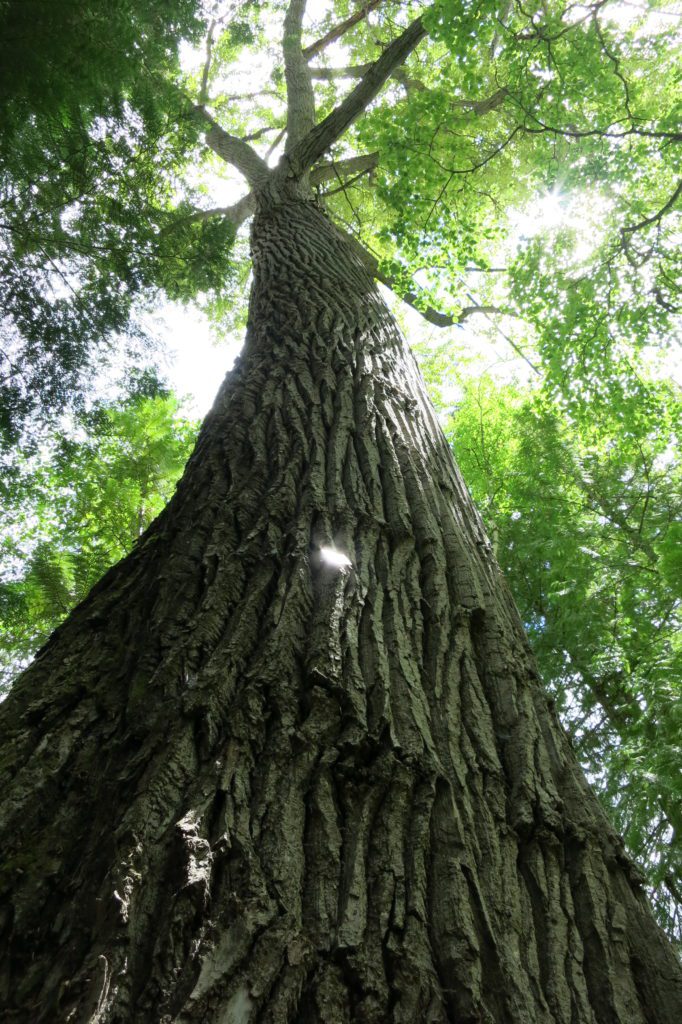
From a chemical perspective and prebiotic origin …we have a lot in common with trees; if the trees and plants go so do we.
Isobel: Population growth is probably the overriding issue but, at the local level, one of the issues is the relationship between people wanting to get out in nature while still wanting to preserve it. We need to find places, especially during the pandemic, where people can experience nature. The conservancies have different models. Some are trail-based while others want to keep the land in reserve. We need both so it’s a challenge finding the balance. I think one of the ways to do that is through education programs.
What would you like your legacy to be?
Isobel: “Legacy” is such a big word! I think what’s important for us is to know, as much as possible, is that what we are doing will be preserved in perpetuity.
The name MapleCross is important because when people hear it we hope that it will have some weight behind the things we’ve done and that it has some value that will inspire others.
Jan: When we started looking at our MapleCross projects a financial advisor recommended we just invest and leave it as a legacy gift. Another wise financial advisor said, “Why don’t you invest in land conservancy now while you’re alive and have fun with it while leaving a legacy.”
Our experience with the projects we’re doing brings an amazing amount of satisfaction. We hope to do something that’s a bit interesting and that will help people. But the road to what we’re doing is wonderful.
Isobel: As a final thought I’d like to say how pleased we are with The Nature Trust of BC, their excellent work and their excellent staff.
We consider ourselves partners and we’ve been exceptionally happy. We hope to see our relationship continue for a long time.
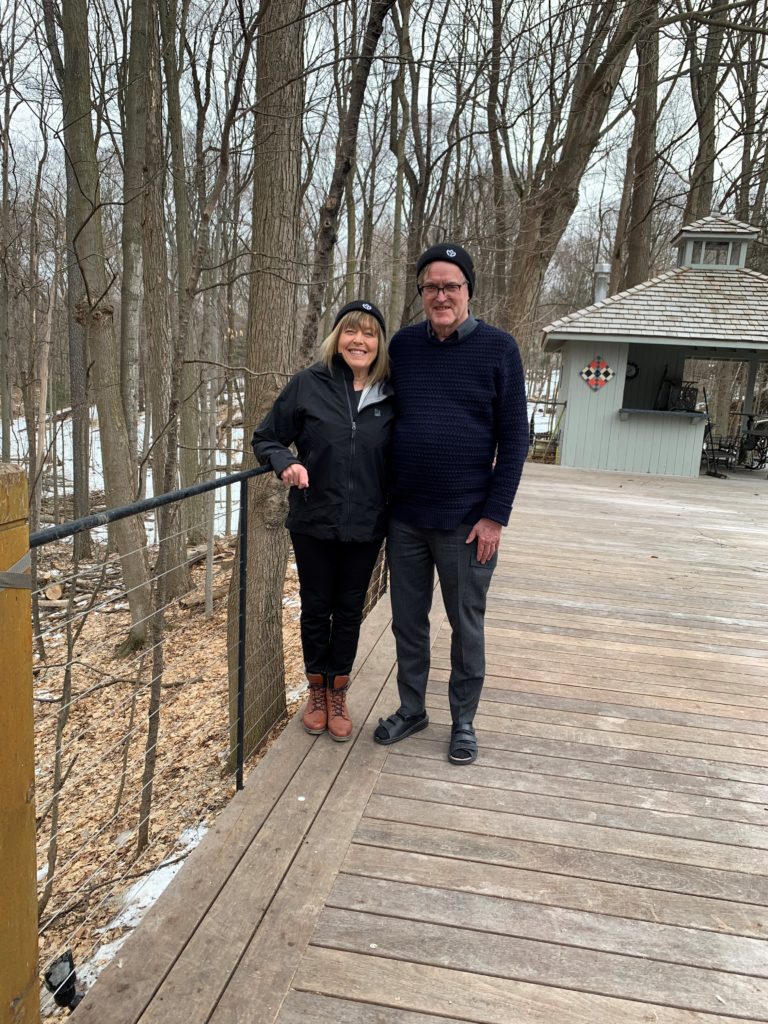
Jan and Isobel spoke to us via Zoom from their home in Aurora, Ontario. The interview has been condensed and edited for clarity and space.
